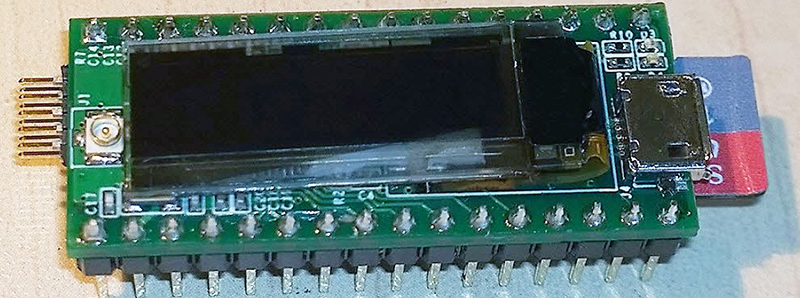Putting an full microcontroller platform in a DIP format is nothing new – the Teensy does it, the Arduino nano does it, and a dozen other boards do it. [Alex] and [Alexey] aren’t content with just a simple microcontroller breakout board so they’re adding a radio, an OLED, an SD card reader, and even more RAM to the basic Arduino platform, all in a small, easy to use package.
The DIPDuino, as [Alex] and [Alexy] are calling it features an ATmega1284 processor. To this, they’re adding a 128×32 pixel OLED, a micro SD slot, and 1Mbit of SRAM. The microcontroller is a variant that includes a 2.4 GHz Zigbee radio that allows for wireless connections to other DIPDuinos.
What are [Alex] and [Alexey] going to do with their cool little board? They’re planning on using the OLED for a watch, improve their software so the firmware can be updated from the SD card, and one of [Alex]’s friends wants to build a RepRap controller with one of these. There’s a lot of potential with this board, and we’re interested in seeing where the guys take the project from here.

















You would think all these micro controllers would come with Bluetooth and minimum a gig of ram or two and made to cross talk with every os out the box
BT keeps changing, though. bt3 and now bt4, who knows how many more iterations there will be. there is apt-x for good audio and now apt-x low latency. its a moving target, in other words!
in cases like that, I’d opt to keep that subsystem as a module on its own and upgrade it as the industry changes.
stuff I’d put into a controller core is the stuff that is NOT changing like the wind. serial, i2c, spi and a/d d/a are such examples. BT is, well, not.
There will be new versions for as long as phone and acessory manufacturers want to sell you the ‘upgrades’.
*cough*GNUBlin*cough*
Those square pins kill the claim that’s a 40 pin DIP package compatible with an IC socket
But there are pin headers with small round pins, fitting perfectly into IC sockets.
that annoys me, too. you can use low profile DIP chip sockets if you use the thin round machine pin headers. if you use the square bulky (cheap and common) headers, you cannot use IC sockets anymore. if you look for the 2 types of headers, the square kind is 100x easier to find and that seems to be why they are so popular. very annoying, since they are bulky and if some item comes with the pins soldered and you want to change to the other kind, its laborious to unsolder all that, even with good rework tools. nanos come unsoldered, pin-wise, from what I’ve seen (and bought) and I like it that way. let ME pick which style of header pins I plan to use.
DIPDuino actually fits standard IC socket. Please visit my project page for the picture inserted into DIP32 socket of an old modem (just for fun) :)
I really like the idea of a small zigbee and ‘arduino’ system. I’m working on some remote control stuff that is arduino based and uses old style (I guess its now ‘old style’) xbee radio modules. the form factor, pin spacing and the need for an adapter board made the xbee stuff kind of expensive and more bulky than it needs to be, even for hobbiests and ‘makers’. if a chip/module like this can be ordered without the display and used as an arduino/xbee engine, of sorts, that would be appealing to me. and since it would be embedded, I’d probably opt not to have the usb/serial stuff onboard. that takes up space and adds cost and I’d prefer to just have serial ttl pins there for the occasional programming (the model is that it will be USED more than PROGRAMMED, so why not optimize for the user rather than the programmer.)
the oled looks cute and I could see some applications for that. hopefully its optional, though.